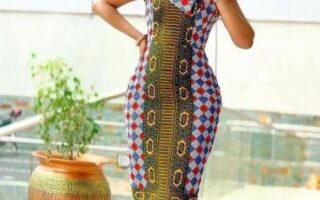In the vibrant tapestry of Indian fashion, few styles evoke as much allure and cultural significance as the Rajputi dress for women. Rooted in the royal heritage of Rajasthan, this exquisite attire reflects the rich history and traditions of the Rajput clans, embodying a harmonious blend of elegance, strength, and artistry. Characterized by its intricate embroidery, luxurious fabrics, and vibrant colors, the Rajputi dress transcends mere clothing; it is a narrative woven through time, celebrating the spirit of warrior queens and the legacy of a bygone era. In this article, we will explore the captivating elements of Rajputi attire, from its historical significance to modern interpretations, offering insights into how this majestic garment continues to inspire women today. Join us as we delve into the enchanting world of Rajputi fashion, where each fold and stitch tells a story of grace, tradition, and unyielding pride.
Table of Contents
- Exploring the Rich Heritage of Rajputi Dress in Womens Fashion
- Key Elements of Authentic Rajputi Attire and Their Cultural Significance
- Styling Tips to Embrace the Timeless Elegance of Rajputi Dresses
- Must-Have Accessories to Complement Your Rajputi Ensemble
- Q&A
- Key Takeaways
Exploring the Rich Heritage of Rajputi Dress in Womens Fashion
The allure of Rajputi dress lies in its intricate craftsmanship and deep cultural roots, embodying the valor and grace of the Rajput warriors and their queens. This traditional attire, often characterized by vibrant colors, rich fabrics, and elaborate embroidery, is more than just clothing; it is a story woven into every thread. Its most celebrated components include the regal ghagra (skirt), a beautifully embellished choli (blouse), and a flowing odhani (dupatta), which together create a silhouette that is both majestic and feminine. The textiles used are often adorned with traditional motifs, such as peacocks and floral patterns, making each piece a unique masterpiece that reflects the wearer’s personality and heritage.
Fashion enthusiasts today are embracing Rajputi attire not just for its cultural significance, but also for its versatility and elegance in modern settings. Contemporary designers are reimagining these classic garments, blending traditional techniques with modern aesthetics. Here are some key features that make this style timeless:
- Bold Color Palettes: Deep reds, royal blues, and shimmering golds are often used to capture attention.
- Exquisite Embroidery: Intricate zardozi and mirror work add an enchanting appeal.
- Layering Techniques: The use of dupattas and shawls offers versatility for various occasions.
- Comfort Meets Style: Breathable fabrics are chosen to ensure ease of movement.
Key Elements of Authentic Rajputi Attire and Their Cultural Significance
The essence of authentic Rajputi attire lies in its intricate craftsmanship and rich symbolism, reflecting the valor and grace of Rajput women. Central to this attire are the chaniya choli and odhani. The chaniya choli typically features a flared skirt adorned with vibrant embroidery and mirror work, symbolizing fertility and the earth’s abundance. Meanwhile, the odhani, a long scarf, is not merely a fashion statement; it represents modesty and tradition, often draped elegantly over the shoulders or head, signifying a woman’s respect for her cultural heritage.
Color plays a crucial role in Rajputi attire, with each hue bearing its own significance. For instance, red denotes love and power, while green symbolizes prosperity. Additionally, the use of jewelry—from elaborate necklaces to statement earrings—complements the attire, serving as a representation of wealth and status. The intricacies involved in these adornments carry stories of bravery, honor, and devotion, further enriching the cultural narrative of the Rajput clan.
Styling Tips to Embrace the Timeless Elegance of Rajputi Dresses
Rajputi dresses are a celebration of heritage and artistry, infused with the elegance of Rajput culture. To style these exquisite garments, begin by focusing on the fabric. Opt for rich textiles such as silk, brocade, or georgette that bring an opulent feel, making every woman look regal. When styling, consider incorporating intricate embellishments like gota patti and zardozi work, which not only enhance the dress but also pay homage to traditional craftsmanship. Remember, the right color palette can elevate your look—royal reds, deep greens, and vibrant blues are timeless choices that resonate with the essence of Rajputi fashion.
Accessories play an integral role in completing the look. Choose traditional pieces such as jewelry made of gold or antique finish, featuring bold designs that capture attention. A statement maang tikka or a pair of jhumkas can add the perfect touch of glamour. Incorporate a dupatta with intricate borders to drape gracefully, enhancing the overall aesthetic. For footwear, consider embellished juttis or traditional mojaris that not only add comfort but also complement the ensemble beautifully. embrace the full look with an elegant hairstyle, perhaps a braid adorned with flowers or a simple bun embellished with traditional hairpins, to embody the true spirit of Rajputi elegance.
Must-Have Accessories to Complement Your Rajputi Ensemble
To elevate your Rajputi ensemble, accessorizing is key. These traditional garments, steeped in rich heritage, shine even brighter when paired with the right accessories. One of the quintessential additions is a stunning Matha Patti, a traditional headpiece that elegantly drapes across the forehead, enhancing the royal aura of the outfit. Additionally, a pair of intricately designed Jhumkas will draw attention to your face while showcasing the exquisite craftsmanship typical of Rajput jewelry. Don’t forget to include a radiant Chuda, a set of traditional bangles that adds a colorful touch, bringing together the whole look with its vibrant hues.
Moreover, the right footwear can make or break your ensemble. Opt for Juttis, which complement your outfit perfectly while ensuring comfort as you move about. A small, beautifully embroidered Purse or Potli can serve both functional and aesthetic purposes, allowing you to carry essentials while adding a pop of color and texture. Lastly, consider a light yet luxurious Dupatta draped gracefully across your shoulder or secured around your waist; it not only enhances the silhouette but also adds an air of elegance to your overall appearance.
Q&A
Q&A: Understanding the Elegance of Rajputi Dress for Women
Q1: What is a Rajputi dress?
A1: The Rajputi dress is a traditional attire that showcases the rich cultural heritage of the Rajput community in India. It typically consists of a beautifully embellished lehenga (skirt), a choli (blouse), and a dupatta (scarf), often featuring intricate embroidery, vibrant colors, and luxurious fabrics. This attire is worn during festivals, weddings, and special occasions, embodying grace and royal aesthetics.
Q2: How did the Rajputi dress evolve over time?
A2: The Rajputi dress has evolved significantly over the centuries. Originating from the regal courts of Rajasthan, it was initially worn by royal women and has influenced modern fashion with its opulent designs. Today, while retaining its traditional essence, the Rajputi dress has been adapted to contemporary styles, incorporating new fabrics and cuts, making it appealing to diverse audiences.
Q3: What are the most common fabrics used in Rajputi dresses?
A3: Rajputi dresses are crafted from various luxurious fabrics, including silk, velvet, and chiffon. The choice of fabric often depends on the occasion; lighter fabrics like chiffon are preferred for daytime events, while heavier silks and velvets adorned with zari work are perfect for weddings and evening functions.
Q4: Are there specific colors associated with Rajputi dresses?
A4: Yes, Rajputi dresses typically feature vibrant colors that hold cultural significance. Rich hues like deep red, royal blue, emerald green, and bright yellow are common, reflecting the vibrancy of Rajasthan. The selection of colors may also vary according to the season or festival being celebrated.
Q5: What kind of embellishments can be found on Rajputi dresses?
A5: Embellishments on Rajputi dresses are a key highlight, showcasing the artistry of traditional craftsmanship. You can find intricate embroidery, mirror work, sequins, and zardozi detailing. These elements add depth and texture, making each outfit unique and eye-catching.
Q6: How can one style a Rajputi dress for a modern look?
A6: Styling a Rajputi dress for modern occasions can be both fun and creative. One can opt for a minimalistic approach by pairing the lehenga with a simple choli and sleek accessories, or mix and match to create a fusion look with contemporary tops. Additionally, layering with jackets or dupattas in modern cuts can add an innovative twist, making it perfect for both traditional and contemporary gatherings.
Q7: Where can someone find authentic Rajputi dresses?
A7: Authentic Rajputi dresses can be found in various places, from local boutiques in Rajasthan that specialize in traditional wear to high-end fashion retailers that offer artisanal pieces. Online platforms also host a wide array of options, where one can explore collections from local designers who focus on preserving this beautiful heritage.
Q8: What tips do you have for caring for a Rajputi dress?
A8: Caring for a Rajputi dress requires attention to detail. It’s best to dry clean these outfits to preserve the fabric and embellishments. When storing, keep the dress in a cool, dry place away from direct sunlight. Using muslin or cotton bags instead of plastic can help prevent damage and maintain the dress’s quality over time.
Q9: What makes the Rajputi dress a popular choice for brides?
A9: The Rajputi dress is a popular choice for brides due to its grandeur and elegance. Many brides opt for heavily embellished lehengas paired with intricately designed cholis, reflecting their royal lineage. The traditional richness and the ability to incorporate vibrant colors and stunning embroidery make it a coveted choice for brides looking to make a lasting impression on their special day.
Q10: Can men wear Rajputi attire too?
A10: Absolutely! While the Rajputi dress is primarily associated with women, men also have their traditional attire, often referred to as “Rajputi Kurta” or “Jodhpuri suit.” These outfits are characterized by their intricate designs, vibrant colors, and royal flair, contributing to the overall cultural richness of Rajput heritage.
This Q&A aims to shed light on the beauty, history, and contemporary relevance of the Rajputi dress for women, celebrating not just a garment, but a profound narrative woven through the threads of time.
Key Takeaways
In a world where fashion continually evolves, the Rajputi dress stands as a timeless testament to the rich heritage of Indian culture. Adorned with vibrant colors and intricate designs, these garments not only celebrate the beauty of femininity but also pay homage to the valor and elegance of the Rajput queens who wore them with pride. As you explore the diverse styles and contemporary interpretations of the Rajputi dress, remember that each piece tells a story—of tradition, artistry, and resilience. Whether worn for a festive occasion or a casual gathering, embracing this attire allows you to connect with history while making a bold fashion statement. So, step into the world of Rajputi fashion, where every twirl of fabric carries the essence of the past, inviting you to celebrate your own unique style in the vibrant tapestry of cultural expression.



